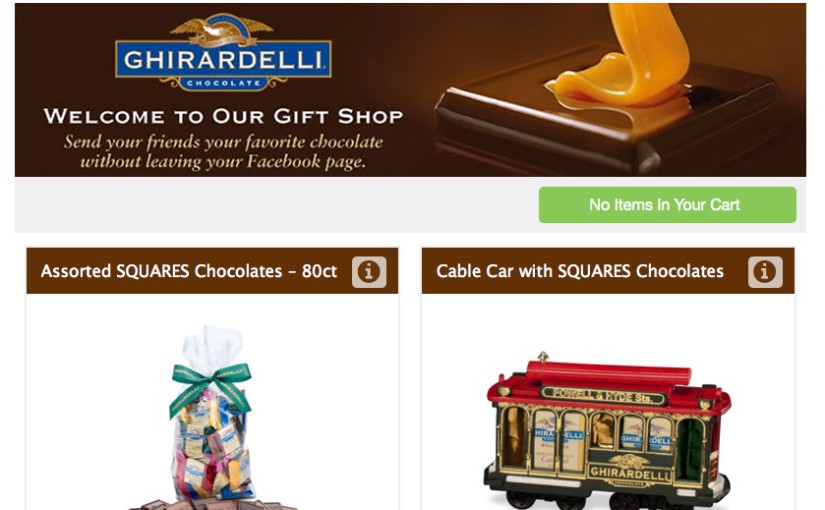Facebook commerce, an opportunity for retailers?

Today, everything is social – including ecommerce. From Nike’s custom sneakers and Burberry’s custom trench coats, to ModCloth’s ‘Be The Buyer intiative.
Social Media allows you to shorten the distance between your brand and your potential customers, gives you visibility, helps you to build a great brand image and reputation, and is the best place to demonstrate that you care about your clients.
Greg Stallkamp, founder and CEO, Lakeshore Express (@LakeshoreExpress) says that “while the overwhelming majority of our sales are conducted via ecommerce (at least 95%), what is even more surprising is that the main driver of our sales is from Facebook, LinkedIn and Twitter.”
“It’s a matter of time—within the next five or so years—before more business will be done on Facebook than Amazon” Sumeet Jain, Principal, CMEA Capital
“In three to five years, 10 percent to 15 percent of total consumer spending in developed countries may go through sites such as Facebook” Mike Fauscette, Analyst, IDC Consulting
How can brands take advantage of this? The answer is social commerce.
Another survey has also revealed the social networks that consumers use to share products. 63% said Facebook, 25% Twitter and 22% Pinterest.
The research also said that less than one in five people had left negative feedback on company Facebook pages, and that 90% of all purchases are accredited to social media influence, making social commerce a worthy pursuit for any business looking to strengthen its online marketing plan.
But the most shocking data is that by 2014, Forrester Research is predicting 15 Billion Revenue in Social Commerce
The social effect
Social commerce mimics how things work in the offline world, for example, the way we go shopping with friends at physical outlets. You’re much more likely to buy something if a friend approves. social effect of Facebook makes it an alluring target for online retailers.
There is a 4x probability of users conducting transactions inside Facebook, when referred by a friend. (source)
Converting fans into customers is easier than acquiring a new audience who have no brand influence. After all it takes a long time for a brand to create, nurture and build a community on its fan page. Peer to peer sharing and recommendations are also one of the key driving factors behind Fcommerce.
A customer who has been on your social media fan page is 10 times more likely to buy a product than one who has not. Furthermore, they are also likely to buy more than another customer. (source)
Using just Facebook alone as a social commerce platform, many businesses have seen a major boost in their online presence, generating more sales and brand awareness than ever before.
Is Fcommerce a good channel for brands?
Facebook commerce should be seen as part of a wider strategy, for brands who have a large following on the social network.
It fits in like this: ecommerce, mcommerce, fcommerce.
Also, some research has found that redirecting your Facebook fans to your external site is risky, and can result in drop-off rates as high as 90%.
So, if you have a fcommerce store you can keep your fans right on your Facebook page allowing them to browse and buy without ever leaving.
You also have the option to use Promoted Posts and Ads to drive traffic to your fcommerce store or app, which can drive better results in your sales.
You can customize your app with promotions and sales in the home page and promote them on Facebook.
By giving your target audience the choice of visiting your social commerce store you make it easier for them to seek the opinions of their friends. It also makes shopping more effective for the customer and for the business.
A reality check?
Fcommerce is not a big driver of sales for most fashion retailers, as Econsultancy point out in this article. However, it shouldn’t be written off yet, as some brands do seem to be making a success of it, and as the statistics in this article show, there’s definitely an audience there.
Here are some examples of how brands are using it:
• Ghiradelli Chocolate Facebook Store
This is one of the best examples we have found. You can complete your purchase inside facebook without doing any re-direct.
• Easy Social Shop gives you the possibility to integrate your website inside Facebook
We like it because you it’s easy to set up and share your products. It is the best one for a user experience social sharing perspective.
• Fred Perry Facebook Store
A clean and user-friendly store gives you the opportunity to see and share their products. However, if you want to finish your purchase they redirect you to the desktop site.
This post was written by our marketing assistant, Sara Navarro Medina. Find her on Twitter here.






